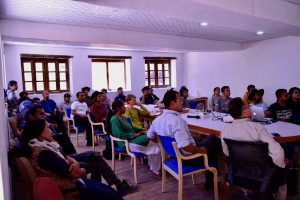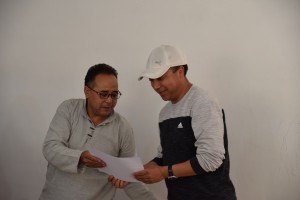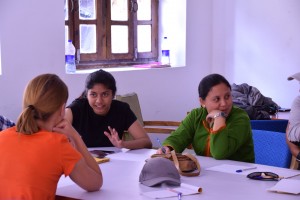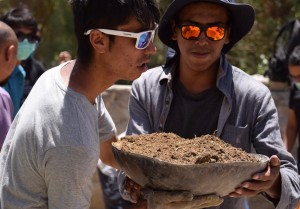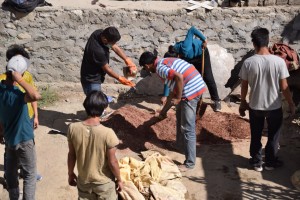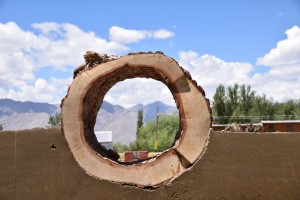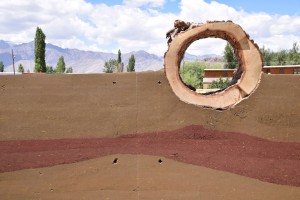Rammed earth, also known as “Gyapak” is an old traditional technique for constructing foundations, floor and walls using natural raw materials. It is an ancient method which were widely used across Ladakh. It has stood the test of time. It has been used to create buildings around the world whose beauty and robustness are still visible today, like great wall of China, Magnificent Singye Namgyal Palace and many more old forts in Ladakh.
The many advantages of building with rammed earth include superior thermal mass, temperature and noise control, strength, and durability, low maintenance, pest deterrence as well as its beauty and pleasure of building with a natural and environmentally sound material.
To promote the rammed earth technology in Ladakh, LEDeG organized 3 days’ workshop of Rammed earth on 9th, 10th and 11th of July 2018. More than 20 people participated in the workshop. Architect Mr.Sandeep Bogadi who is well known for his work on rammed earth conducted the workshop in Ecology centre.
The 3-day workshop was designed in such a way that it involved a series of presentation, hands-on experience of local soil and testing various samples with different composition
DAY 1-
Bogadhi started with a presentation on earthen architecture. The basic structure was based on Ladakh and its architecture and construction techniques. He added points on identifying the resources and also displayed pictures from his work and explained that earth architecture can also be fashionable.
Further, he explained to the participants the major construction techniques that are used for construction in Ladakh. He explained about Adobe, Cob and Rammed earth. As the workshop was based on rammed earth technique Bogadhi therefore explained its arrangement of formwork, mixing and ramming technique.
Post-Lunch Session:
The entire lot of 20 people, including participants and architects from LEDeG, were divided Into 4 groups of five and they brainstormed for a design on rammed earth wall and also the formwork for the wall. Since, there were people from different background it helped in bringing creative ideas for the design and formwork.
Later the participants analyzed soil samples through sedimentation test by mixing soil samples in different jars. This helped in calculating the amount of sand, silt, clay and organic matter in the soil and this analysis was later used for preparing the mixture for the rammed earth.
Day 2:
After theoretical explanations on Day One, it was time for the participants for some practical work. On Day 2, all the participants started constructing the rammed earth wall at the main gate of LEDeG office. But before that they analysed all the soil samples that they had prepared on first day which helped them to calculate the perfect mixture: of cement 9/10 of soil.
One team set the formwork whilethe other team started preparing the mixture for the rammed earth wall. Thereafter, a 6-inch formwork was continuously filled with the mixture and then rammed with a wooden rammer. To make the wall more appealing, Bogadhi added red oxide, stones of different colors in-between. Later, a big hollow wood was placed at the top of the wall.
Day 3:
The formwork was finally opened and the rammed earth wall was inaugurated by Lobzang Tsering, Working Committee Member of LEDeG. He appreciated the work of the participants and shared the importance of using local materials. He distributed the participation certificate to all the participants.
This workshop was funded by European Union and BMZ under Liveable Leh Project.
